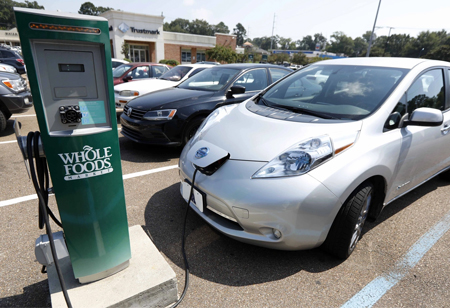Cobalt mining creates dangerous tailings and slags that can leach into the environment. Studies have found high levels of cobalt and other metals exposure in nearby communities, especially among children.
FREMONT, CA: Governments and manufacturers are promoting electric vehicles worldwide as a crucial technology for reducing oil consumption and fighting climate change. However, as electric cars and trucks become more popular, a persistent question has arisen: Are they really as green as they claim to be?
While most experts agree that plug-in vehicles are a more environmentally friendly choice than conventional vehicles, how they're charged and assembled can affect the environment. Here's a list of some of the most critical issues, along with ideas for how to fix them.
How Electricity is Produced Makes a Difference
Many electric cars sold today produce substantially fewer planet-warming emissions than most gasoline-powered vehicles. However, how much coal is burned to charge such plug-in vehicles has a big impact. And, before electric cars are fully emission-free, electric grids must become much cleaner.
Check Out This: MetalsMiningReview
Raw Materials Can Be Questionable
The lithium-ion cells that power most electric vehicles, like many other batteries, rely on raw materials such as cobalt, lithium, and rare earth elements, which have been connected to serious environmental and human rights issues. Cobalt has been particularly troublesome. Cobalt mining creates dangerous tailings and slags that can leach into the environment. Studies have found high levels of cobalt and other metals exposure in nearby communities, especially among children. Smelting, a process that releases sulfur oxide and other hazardous air pollutants, is also used to extract metals from their ores.
Recycling May Be A Safer Option
Preventing a pileup of spent batteries as earlier generations of electric vehicles approach the end of their lives looms as an obstacle. Lithium-ion batteries, which can carry more energy in the same amount of space as older, more widely used lead-acid batteries, are used in the majority of today's electric vehicles. However, while lead-acid batteries are recycled at a rate of 99 percent in the United States, lithium-ion battery recycling rates are estimated to be about 5 percent.
Several automakers have experimented with grid storage using old electric vehicle batteries. Another leading vehicle manufacturer says that its battery packs were designed with long-term use in mind. On the other hand, using car batteries may be used as backup storage for solar power for a decade or more if done correctly.
See also: Top Automotive Solution Companies

 Copyright © 2025 AutoTech Outlook. All Rights Reserved | Privacy Policy | Subscribe | Sitemap | About us | Feedback Policy | Editorial Policy
Copyright © 2025 AutoTech Outlook. All Rights Reserved | Privacy Policy | Subscribe | Sitemap | About us | Feedback Policy | Editorial Policy